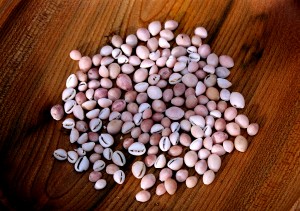 As 2013 is the “Year of Natural Scotland” it occurred to me that there is one habitat that is very much worth visiting. It has the attraction of being rich in wildlife at any time of the year. It is the coast and wherever you stay on holiday or live in the Highlands you are not too far from one of the most exciting places to visit as far as wildlife is concerned. Most of us, at one time or another, go to the coast and amongst the many attractions are the birds that, at this time of the year, can include large numbers of ducks, geese and waders. Dolphins are another attraction although there are only relatively few places where you can be certain of seeing them. In the summer there are the breeding and feeding birds with oystercatchers and gulls with, at some sites, fulmars nesting on the cliffs. One of my favourite coastal places is Balnakeil Bay in the north west of Sutherland. Another is the promontories on the north east coast of Caithness. The Ardnamurchan peninsular has its own attractions and the various small islands in the sea lochs have always fascinated me.
As 2013 is the “Year of Natural Scotland” it occurred to me that there is one habitat that is very much worth visiting. It has the attraction of being rich in wildlife at any time of the year. It is the coast and wherever you stay on holiday or live in the Highlands you are not too far from one of the most exciting places to visit as far as wildlife is concerned. Most of us, at one time or another, go to the coast and amongst the many attractions are the birds that, at this time of the year, can include large numbers of ducks, geese and waders. Dolphins are another attraction although there are only relatively few places where you can be certain of seeing them. In the summer there are the breeding and feeding birds with oystercatchers and gulls with, at some sites, fulmars nesting on the cliffs. One of my favourite coastal places is Balnakeil Bay in the north west of Sutherland. Another is the promontories on the north east coast of Caithness. The Ardnamurchan peninsular has its own attractions and the various small islands in the sea lochs have always fascinated me.
However, whilst the coast in itself is captivating for all sorts of reasons, there is one aspect of it that deserves closer attention. It would be a good goal for this year to explore this further. It is the foreshore as such, the intertidal zone that is revealed by the tides every day. You can walk a stretch of this zone every day for ages and there is always something different to see, perhaps having been washed up by the previous tide and deposited on what is often a fascinating tideline. Then there are the rock pools that are small magical kingdoms of their own that often vary in the amount of salinity as the tide comes in and is mingled with rain or run off from the surrounding land. There may be hundreds of rock pools, especially if the tides are very low yet each one has a characteristic of its own with a veritable jungle there with competition with so many mixed animals and plants.
It will take some planning as you need to know about tides, local newspapers will tell you, and you will need wellingtons and a good pond net is invaluable for you to look close at specimens. These may vary from small crabs to shrimps and small fish to sea urchins. My favourite fish, by far, in such rock pools is the fifteen spined stickleback. Sticklebacks are always fascinating but this marine species can grow up to an amazing six inches long (15 cms). Fish are beautifully streamlined at any time but this stickleback is just superb in all ways. There is another spin–off of looking at such rock pools as you can also do some foraging for food. It is normally a superb place to get shellfish to eat. The main ones I go for are the mussels and the winkles.
The one aspect that has always drawn me to such places is an inanimate one and they have fascinating names such as necklace, pinnate top, acteon, banded top and wendletrap. They are shells and above all of them the ones that I always try to find are the two species of cowries. The two species are shown in the photograph and the ones with two or three spots on the top are the European cowrie and the plain ones the northern cowrie. They can be very difficult to find and the most difficult place I found was on the Isle of Rum. There it could take me forty minutes to find one, although on that island there are very few rock pools. Along the north coast one of the best places I found them, as far as numbers were concerned, was the beaches at John o’- Groats. Indeed one of their names is Groatie Buckies. So a resolution for 2013 could be to look at the coast more and especially those rock pools. Good hunting for cowries.
